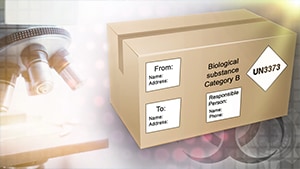Key points
- CDC performs multiplex real-time polymerase chain reaction, a type of nucleic acid amplification test (NAAT), to detect Chlamydia pneumoniae.
- CDC doesn't use culture or serological testing as routine diagnostic methods.
- CDC only accepts specimens from state public health laboratories and other federal agencies.
- Collect specimens before antimicrobial therapy starts, if possible.

Specimen acceptance criteria
CDC only accepts certain specimen types for C. pneumoniae testing in consultation with public health laboratories and other federal agencies.
Specimens from private healthcare providers and institutions must be submitted in consultation with a public health department laboratory for appropriate processing. Public health department laboratory staff can forward approved specimens to CDC for specialized testing.
Specimen, documentation, packaging, and shipping
Specimen requirements vary by the specific test requested.
Get more information on specimen, documentation, packaging, and shipping requirements: Chlamydia species (respiratory) molecular detection.
Common rejection criteria
CDC's laboratory most commonly rejects specimens for C. pneumoniae testing for the following reasons:
- Specimens stored, shipped, or received at incorrect temperatures
- Improperly labeled specimens
Specimen collection protocol
Request permission to swab patients for C. pneumoniae and other respiratory pathogen testing who meet at least one of the following criteria:
- Cough for ≥ 3 days and fever ≥ 100.0°F (reported or documented)
- Chest x-ray confirmed pneumonia
For oropharyngeal swab specimens
Insert swab into the posterior pharynx and tonsillar areas. Rub swab over both tonsillar pillars and posterior oropharynx and avoid touching the tongue, teeth, and gums.
For nasopharyngeal swab specimens
Insert flexible shaft swab through the nares parallel to the palate (not upwards) until it contacts the nasopharynx. Indications of contact include encountering resistance and the distance equaling that from the ear to the patient's nostril. Gently rub and roll the swab.
Resources
Unexplained respiratory disease outbreaks
Get additional information on investigating unexplained respiratory disease outbreaks.
